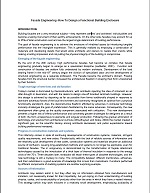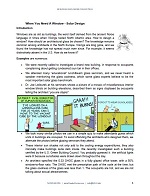Movements And Tolerances In Curtain Wall And Cladding Design

As difficult as it is to imagine, buildings move. Introduction of curtain walls gave the buildings even more freedom to move. The peaceful rigidity of bulky bearing walls and relatively short spans of oversized structural members belong to the past. Today’s buildings move a lot more.
In fact, the biggest single difference between curtain walls and windows punched in the load-bearing walls lies in the mechanisms that have to be implemented in curtain walls to accommodate the movements between both a cladding and a main building structure and among the cladding components themselves.
The movements are induced by same live load as in the past: users, wind, seismic, temperature and moisture fluctuations, with possible exception for mechanically (HVAC, elevators, etc) induced pressure differentials. The components of a modern building respond differently for several reasons. The material usage became more economical, yielding higher deflections; a thermal insulation isolated cladding from a body of the building yielding higher temperature differentials, the materials (metals and plastics) became more volatile themselves.
Please fill the form below to receive this free PDF (It contains 21 figures, and 10 pages, size 1.7 MB).
If you experience difficulties downloading this publication from here, you may try our old website download link.
[email-download download_id=”3″ contact_form_id=”501″]
Update: Thank you for your kind feedback. There are some texts (I.e. the discussion of Spearin doctrine) which seem to be favorite among our dear readers. This article seems to be liked by architects to the degree I heard it was used as a textbook in architectural college. You can help other readers by adding comments and recommending the best ones. It’s awkward for me to make this determination.

 Condensation Risk Assessment
Condensation Risk Assessment Facade Access
Facade Access Facade Engineering. How To Design a Functional Building Enclosure
Facade Engineering. How To Design a Functional Building Enclosure Facade Impact Resistance Manual
Facade Impact Resistance Manual Foggy Glass Disease
Foggy Glass Disease How To Write and Read a Forensic Report
How To Write and Read a Forensic Report Review of Curtain Walls, Focusing on Design Problems and Solutions
Review of Curtain Walls, Focusing on Design Problems and Solutions Transitions: How to Design Facade Interfaces
Transitions: How to Design Facade Interfaces When You Need A Window – Solar Design
When You Need A Window – Solar Design
Leave a Reply
You must be logged in to post a comment.